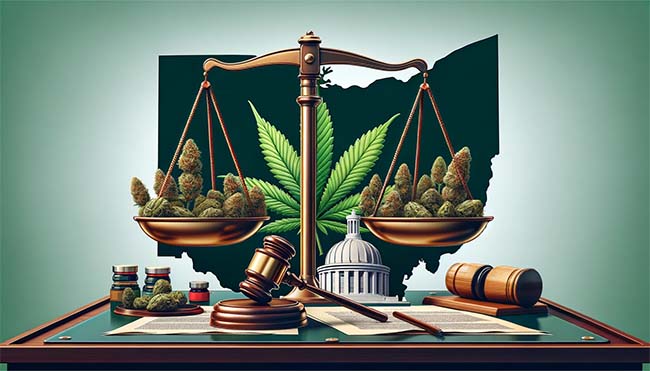Revealed plans to scrap home cultivation, hike taxes

In a surprising turn of events, the Ohio Senate is poised to dramatically reshape the state’s freshly minted legal marijuana landscape. This Monday, lawmakers revealed plans to scrap home cultivation, hike taxes, and redistribute revenue generated by the state’s burgeoning marijuana industry. These sweeping changes were introduced through an amendment to an unrelated liquor bill.
This legislative pivot follows hot on the heels of Ohio’s decision last month to legalize recreational marijuana, a move supported by 57% of voters. The Senate is set to cast its votes on the newly revised House Bill 86 this coming Wednesday.
Ohio’s New Cannabis Horizon: A Shift in Course
Senator Rob McColley, R-Napoleon, reassures that the age-based access to marijuana products for those 21 and older remains unaltered. However, Senator Bill DeMora, D-Columbus, contends that these proposed amendments deviate from the electorate’s intentions.
Tom Haren, speaking for the pro-legalization campaign, expressed concerns that the Senate’s proposals dilute critical aspects of Issue 2, notably home cultivation and social equity. He warns that increased taxation might bolster the black market, driving Ohioans to purchase their cannabis products elsewhere, like Michigan.
The Senate’s Proposed Overhaul: Key Points

The Senate’s amendments to the legal marijuana framework in Ohio include:
- Prohibiting home cultivation, which under Issue 2, allowed six plants per individual and 12 per household.
- Increasing the sales tax on legal marijuana from 10% to 15% and introducing a 15% tax on cultivators.
- Redirecting tax revenue: Approximately 45% to Ohio’s general revenue fund, 30% to law enforcement training, 15% to substance abuse prevention and treatment, and 10% to a safe drivers program. This shift eliminates funding for municipalities hosting dispensaries.
- Reducing THC levels in products: Senators suggest capping THC at 25% for plant material and 50% for extracts, a decrease from Issue 2’s minimums of 35% and 90%, respectively.
- Limiting possession to one ounce of plant material, five grams of extracts, and 500 milliliters of THC in any form.
- Restricting marijuana consumption to private residences, with landlords having the authority to ban use in apartment complexes.
- Banning marijuana products shaped like bears, cartoons, or fruits, and prohibiting marketing to individuals under 21.
- Allowing employers to forbid marijuana use and make hiring decisions based on marijuana consumption.
- Permitting municipalities to ban marijuana cultivators, processors, and dispensaries, but not consumption.
- Capping the number of dispensaries at 230, a reduction from Issue 2’s allowance of 350.
Uncertain Future for the Senate’s Amendments

The fate of these proposals remains uncertain, with their success in both legislative chambers yet to be determined. A spokesperson for the House Republicans withheld comment, while Governor Mike DeWine’s administration emphasized the importance of a well-regulated legal marijuana market that curtails the black market.
Critics of home marijuana cultivation argue that it could intensify the very black market DeWine seeks to avoid. Senator McColley expressed concerns about the challenges in monitoring and addressing an expanded illicit market.
As the Ohio Senate deliberates on these profound changes to the state’s legal marijuana program, Senator DeMora highlights the rural voters’ preference for home cultivation, suggesting that the new proposals might significantly dilute the original spirit of Issue 2.





